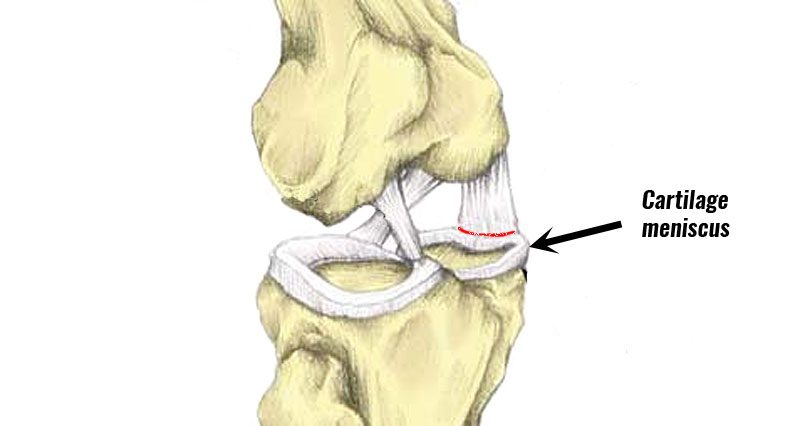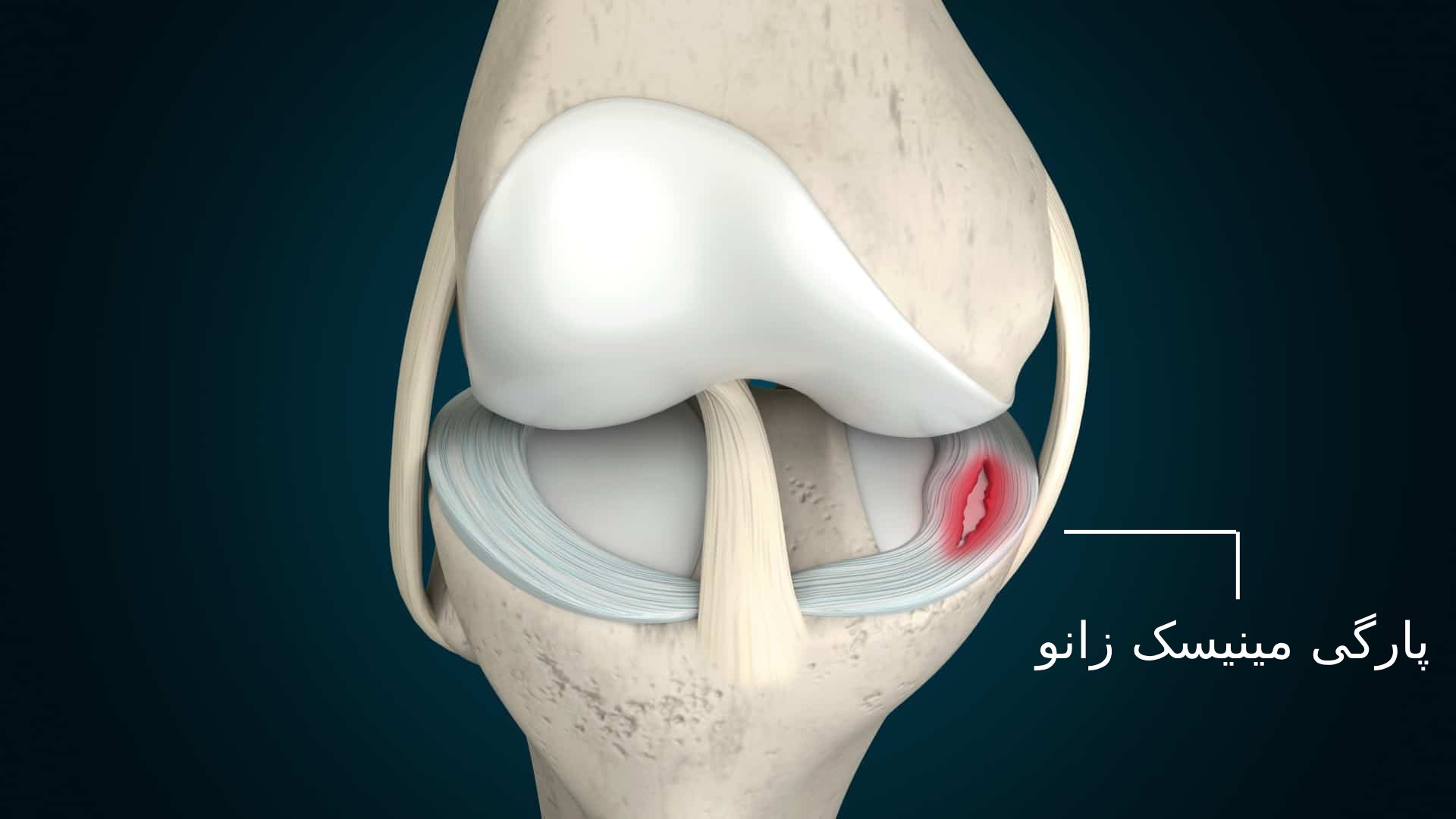Anatomy and Function of the Meniscus

The meniscus is a C-shaped piece of fibrocartilage found in each knee joint. It acts as a shock absorber and helps distribute weight evenly across the joint. There are two menisci in each knee: the medial meniscus, located on the inner side of the knee, and the lateral meniscus, located on the outer side.
Structure and Location
The menisci are located between the femur (thigh bone) and the tibia (shin bone). They are crescent-shaped and have a thick outer rim and a thinner inner edge. The medial meniscus is larger and more C-shaped than the lateral meniscus. The lateral meniscus is more oval-shaped.
Roles of the Medial and Lateral Menisci
The menisci play several important roles in the knee joint:
- Shock Absorption: They act as shock absorbers, distributing forces across the knee joint during activities such as walking, running, and jumping.
- Joint Stability: They help stabilize the knee joint by deepening the articular surface of the tibia, which improves the fit between the femur and tibia.
- Weight Distribution: They help distribute weight evenly across the knee joint, reducing stress on the articular cartilage.
Blood Supply to the Meniscus, Meniscus tear
The blood supply to the meniscus is limited, and this is important in understanding how meniscus tears heal. The meniscus can be divided into two zones based on its blood supply:
- Vascular Zone: The outer rim of the meniscus receives blood supply from vessels in the surrounding joint capsule. This area is called the “red-red” zone.
- Avascular Zone: The inner portion of the meniscus does not receive any direct blood supply. This area is called the “white-white” zone.
Tears in the vascular zone have a better chance of healing than tears in the avascular zone, as they have a better blood supply.
Types and Causes of Meniscus Tears

Meniscus tears are common injuries that can affect individuals of all ages and activity levels. Understanding the different types of tears and the mechanisms of injury is crucial for effective diagnosis and treatment.
Classification of Meniscus Tears
The meniscus can tear in various ways, resulting in different types of tears. These tears are classified based on their location, shape, and severity.
- Location: Meniscus tears can occur in the inner (medial) or outer (lateral) meniscus. Medial meniscus tears are more common than lateral meniscus tears, likely due to the medial meniscus’s more fixed attachment to the tibia.
- Shape: The most common types of meniscus tears include:
- Radial tear: This type of tear is a vertical split in the meniscus, resembling a radial crack. Radial tears are often caused by twisting or pivoting injuries.
- Horizontal tear: This tear runs horizontally across the meniscus. It is often caused by direct impact to the knee.
- Flap tear: This tear involves a portion of the meniscus that has been torn off and is now a loose flap. Flap tears are often caused by twisting injuries.
- Bucket-handle tear: This tear involves a large portion of the meniscus being torn free and resembling a bucket handle. Bucket-handle tears are often caused by twisting injuries and are considered severe.
- Severity: Meniscus tears can be classified based on their severity:
- Grade 1: A minor tear that affects only a small portion of the meniscus.
- Grade 2: A more significant tear that affects a larger portion of the meniscus.
- Grade 3: A complete tear that involves the entire thickness of the meniscus.
Mechanisms of Injury
Meniscus tears typically occur due to sudden, forceful movements that place stress on the knee joint. Common mechanisms of injury include:
- Twisting: This is the most common mechanism of meniscus tears, particularly in athletes. When the knee is twisted while the foot is planted, the meniscus can be torn.
- Pivoting: Pivoting on a planted foot can also cause a meniscus tear. This type of injury is common in sports that involve sudden changes in direction.
- Direct Impact: A direct impact to the knee, such as a fall or a collision, can also cause a meniscus tear.
Prevalence of Meniscus Tears
Meniscus tears are common injuries, affecting people of all ages and activity levels. The prevalence of meniscus tears can vary depending on factors such as age, activity level, and occupation.
- Age: Meniscus tears are more common in older adults, as the meniscus tends to degenerate with age, making it more susceptible to tears. A study by the American Academy of Orthopaedic Surgeons found that meniscus tears are more common in people over the age of 40.
- Activity Level: Meniscus tears are more common in people who participate in activities that involve twisting, pivoting, or direct impact to the knee, such as athletes, construction workers, and manual laborers. For example, a study in the journal “The American Journal of Sports Medicine” found that meniscus tears are common in athletes, particularly those who participate in sports such as soccer, basketball, and skiing.
Symptoms and Diagnosis of Meniscus Tears

A meniscus tear can cause a range of symptoms, depending on the severity and location of the tear. Understanding these symptoms is crucial for early diagnosis and appropriate treatment.
Symptoms of Meniscus Tears
The following are common symptoms associated with a meniscus tear:
- Pain: A sharp, sudden pain in the knee, often accompanied by a popping or clicking sensation, is a hallmark symptom of a meniscus tear. This pain can worsen with activities like twisting, squatting, or kneeling.
- Swelling: Swelling around the knee joint is another common symptom, often appearing within a few hours after the injury. The swelling can be significant and may limit the range of motion of the knee.
- Locking: The knee may feel like it’s “locking” or “catching,” making it difficult to straighten or bend the leg. This occurs when a torn fragment of the meniscus gets trapped in the joint space.
- Stiffness: The knee may feel stiff and difficult to move, particularly after periods of inactivity. This stiffness can worsen over time if the tear is not treated.
- Instability: The knee may feel unstable or give way, especially when putting weight on it. This is more common with larger or more complex meniscus tears.
Physical Examination for Meniscus Tears
A physical examination plays a crucial role in diagnosing a meniscus tear. The physician will perform a thorough assessment of the knee, including:
- Palpation: The physician will feel around the knee joint to check for tenderness, swelling, and any abnormalities in the joint space.
- Range of Motion: The physician will assess the range of motion of the knee, looking for any limitations or pain with movement.
- Special Tests: The physician may perform specific maneuvers to assess the integrity of the meniscus. Some common tests include:
- McMurray Test: This test involves rotating the knee while applying pressure on the joint. A popping or clicking sensation during the test can indicate a meniscus tear.
- Thessaly Test: This test involves standing on one leg and rotating the knee while the leg is slightly bent. Pain or a feeling of instability during the test can suggest a meniscus tear.
Imaging Techniques for Meniscus Tears
Imaging techniques can help confirm the diagnosis of a meniscus tear and assess the severity of the tear.
- MRI (Magnetic Resonance Imaging): MRI is the gold standard for diagnosing meniscus tears. It provides detailed images of the knee joint, allowing the physician to visualize the tear and assess its location, size, and complexity.
- X-ray: X-rays are generally not used to diagnose meniscus tears, as they primarily show bone structures. However, they may be used to rule out other conditions, such as fractures, or to assess the alignment of the knee joint.
A meniscus tear, a common knee injury, can be a real pain. It occurs when the cartilage in your knee, known as the meniscus, is torn. This can happen from a sudden twist or impact, and can lead to pain, swelling, and difficulty moving your knee.
If you suspect you might have a meniscus tear, it’s important to get checked out by a doctor. They can help you understand your specific situation and recommend the best course of treatment. You can learn more about the causes, symptoms, and treatment options for a torn meniscus on our website.
Understanding your injury is the first step towards getting back to doing the things you love.
A meniscus tear can be a real pain, literally! It’s a common injury, especially for athletes like Michigan’s rising star, JJ McCarthy, whose impressive performance on the field is sure to keep fans glued to their screens. JJ McCarthy news is always hot, but remember, even the most talented players need to prioritize their health and avoid those nasty meniscus tears.
